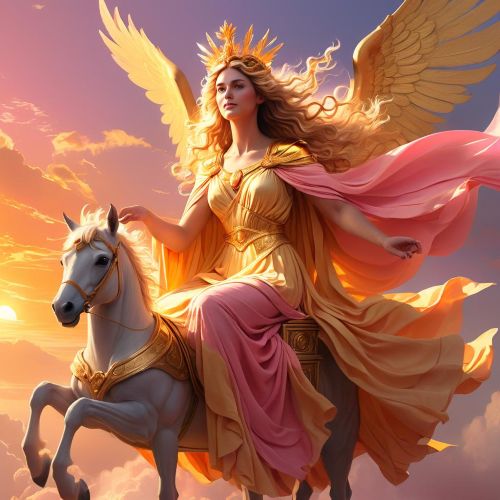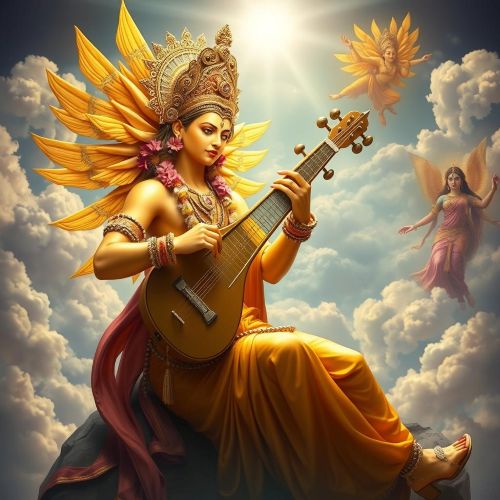The Wrath of the Gods: Ancient Flood Myths from Around the World
Flood myths are among the most enduring and widespread legends in world mythology. Found in nearly every culture, these stories often describe a cataclysmic deluge that wipes out humanity, serving as both a cautionary tale and a symbol of renewal. The prevalence of these myths suggests a shared human experience—perhaps inspired by real-life floods—that has been passed down through generations. This article explores some of the most fascinating flood myths around the world, revealing their cultural significance and the themes they share.
Mesopotamian Flood Myth – The Epic of Gilgamesh
One of the oldest recorded flood myths comes from ancient Mesopotamia, specifically the Epic of Gilgamesh. In this story, the gods decide to flood the world to curb human overpopulation. Utnapishtim, a mortal chosen by the god Ea, builds a massive boat and fills it with animals and his family. The flood lasts for seven days before receding, and Utnapishtim sends out a dove, a swallow, and finally a raven to find dry land. The similarities between this myth and the biblical Noah’s Ark suggest a shared origin or cultural diffusion.
Noah’s Ark – The Biblical Flood
The flood story in the Book of Genesis is perhaps the most well-known. According to the Bible, God decides to cleanse the Earth of wickedness by sending a great flood. He commands Noah, a righteous man, to build an ark and gather his family and pairs of animals. After forty days and nights of rain, the floodwaters recede, and Noah sends out a dove, which eventually returns with an olive branch, signaling dry land. This story emphasizes divine judgment, obedience, and the promise of renewal, represented by the rainbow God places in the sky as a covenant.
Indian Mythology – The Story of Manu
In Indian mythology, the flood myth is found in the Satapatha Brahmana and later in the Puranas. The sage Manu is warned by a small fish, which turns out to be an incarnation of the god Vishnu, about an impending flood. Vishnu instructs Manu to build a boat and gather seeds and animals. When the flood comes, Vishnu appears as a giant fish and guides the boat to safety. This myth highlights themes of divine intervention, protection, and the cyclical nature of destruction and creation in Hindu beliefs.
Chinese Mythology – Yu the Great and the Great Flood
In Chinese mythology, the Great Flood of Gun-Yu is a significant tale. Unlike other myths where the flood is a divine punishment, this story focuses on human resilience. The flood lasts for years, devastating China. Emperor Yao tasks Gun with controlling the waters, but he fails. His son, Yu the Great, succeeds by devising a system of canals and dikes to redirect the floodwaters. Yu’s efforts earn him the mandate of heaven, and he becomes the first emperor of the Xia Dynasty. This legend emphasizes ingenuity, perseverance, and the triumph of human effort over natural disasters.
Mayan Mythology – The Popol Vuh Flood Story
In Mayan mythology, the Popol Vuh, a sacred text of the K’iche’ Maya, describes a great flood sent by the gods to wipe out the first race of humans made from wood. These beings lacked souls and gratitude, so the gods destroyed them with a deluge. The survivors were later hunted down by animals and even their own household objects. The flood in this myth symbolizes divine retribution and the gods’ desire to create a more perfect humanity.
Greek Mythology – Deucalion and Pyrrha
In Greek mythology, Zeus, angered by human wickedness, decides to flood the Earth. Deucalion, the son of Prometheus, and his wife Pyrrha are warned and build a chest to survive. After the waters subside, they land on Mount Parnassus and repopulate the world by throwing stones over their shoulders, which turn into men and women. This myth, similar to Noah’s Ark, highlights themes of divine justice, survival, and rebirth.
Aboriginal Mythology – Tiddalik the Frog
Australian Aboriginal mythology features a unique take on the flood myth through the story of Tiddalik the Frog. Tiddalik drinks all the water in the land, causing a drought. The other animals trick him into laughing, causing him to release the stored water and resulting in a great flood. This myth serves as an ecological warning about the importance of water conservation and balance in nature.
Norse Mythology – The Flood of Ymir’s Blood
In Norse mythology, the world is shaped from the remains of the primordial giant Ymir. After Odin and his brothers slay Ymir, his blood floods the land, drowning nearly all the frost giants except for Bergelmir and his wife, who escape on a wooden object (possibly a boat or hollowed tree). This myth connects the flood motif with the Norse theme of creation emerging from destruction.
African Mythology – The Chameleon’s Warning
Several African tribes have their own flood myths. One from the Kikuyu people of Kenya tells of a time when humanity became corrupt. The supreme god Ngai sent a chameleon to warn a righteous man, but he was ignored. Eventually, a great flood wiped out the world, sparing only those who had heeded the warning. This legend shares the common theme of divine judgment and renewal.
The Common Themes in Flood Myths
Despite their cultural differences, most flood myths share common elements:
- Divine Judgment and Moral Cleansing: Many floods are sent as punishment for humanity’s sins or moral corruption.
- A Chosen Survivor: Typically, one righteous person or family is warned and survives to restart civilization.
- Symbol of Renewal: Floods often represent the destruction of the old and the birth of a new, purified world.
- Animal Involvement: Birds, fish, or other animals often play a role in flood survival or warning.
Conclusion
Flood myths around the world offer valuable insights into how ancient civilizations interpreted natural disasters and human morality. Whether seen as punishment, a test of resilience, or a new beginning, these myths continue to resonate across cultures. They remind us of humanity’s deep connection with nature and the eternal cycle of destruction and renewal.








